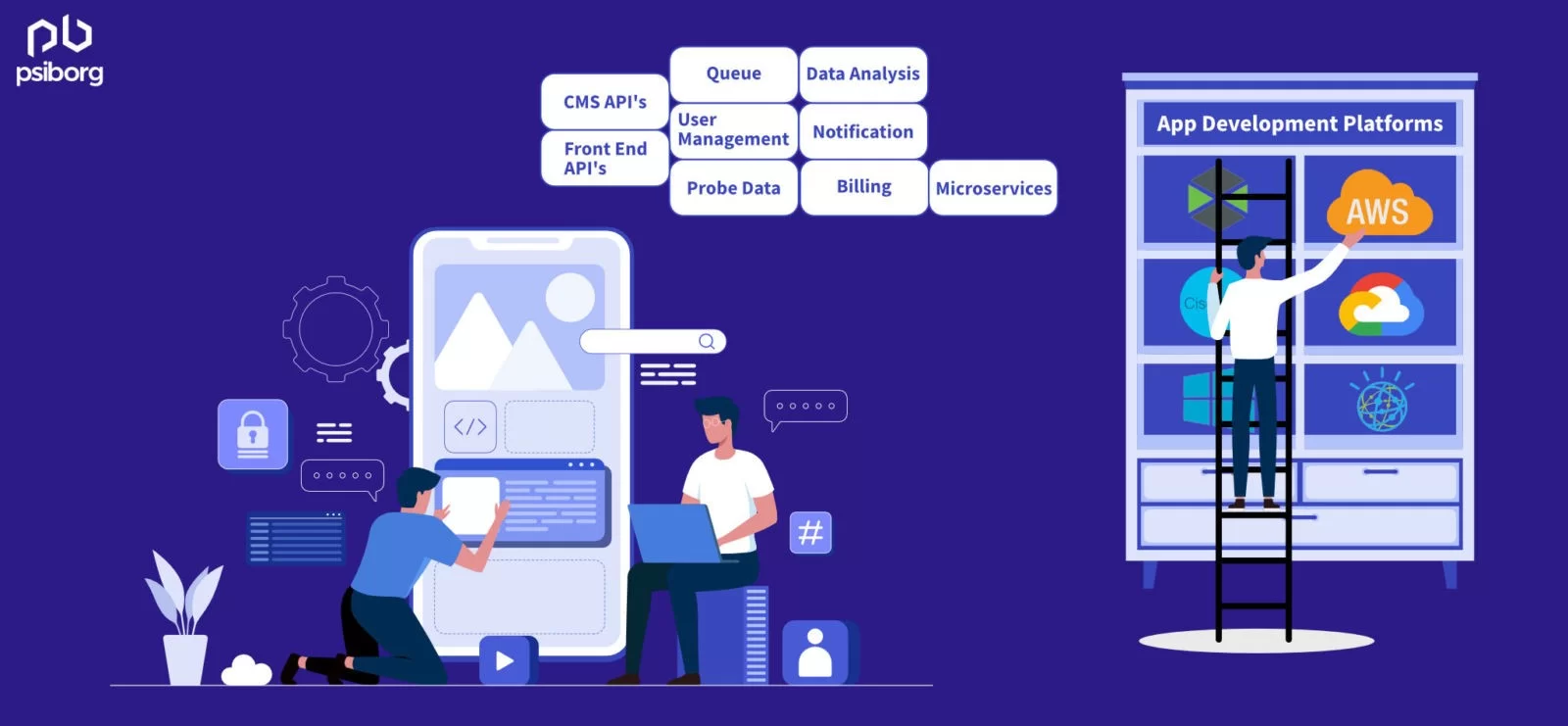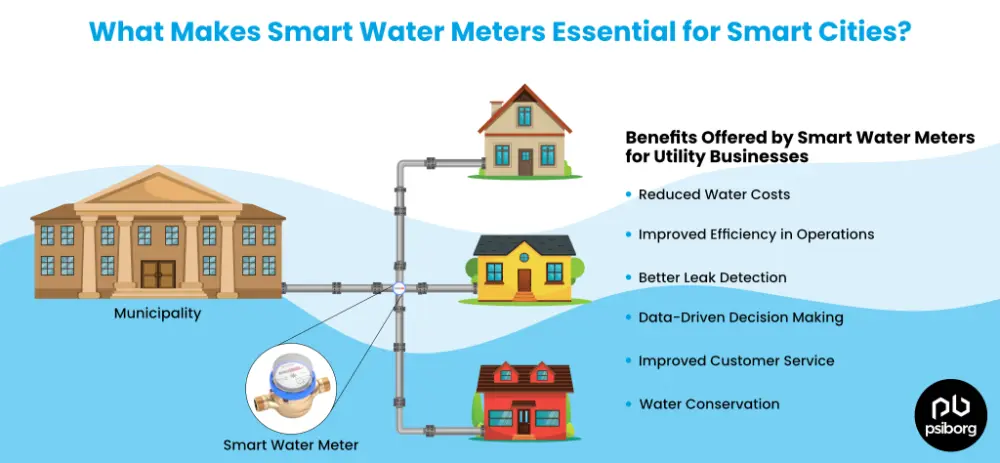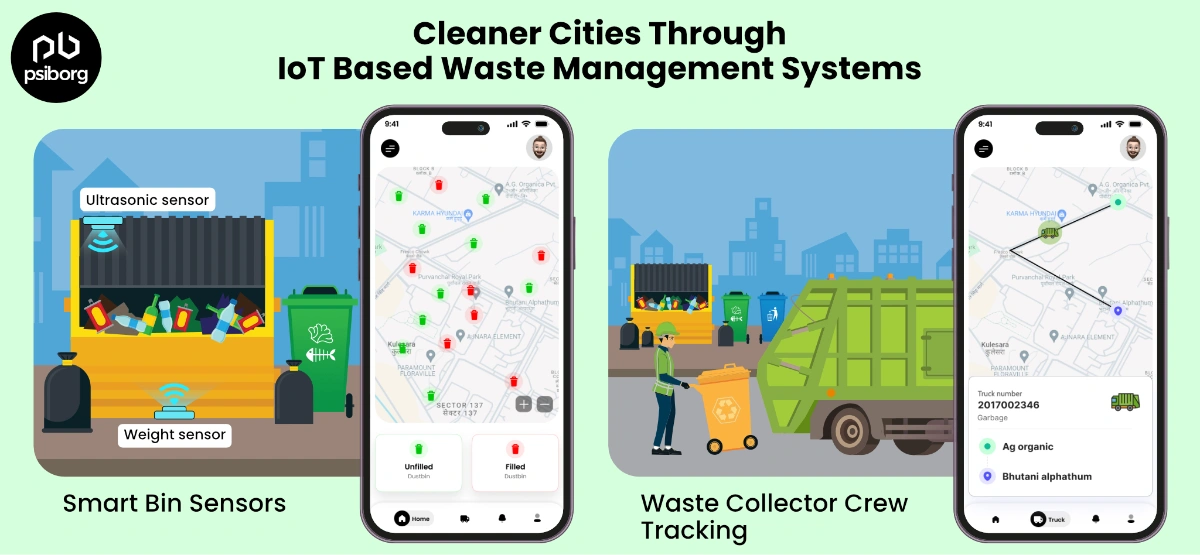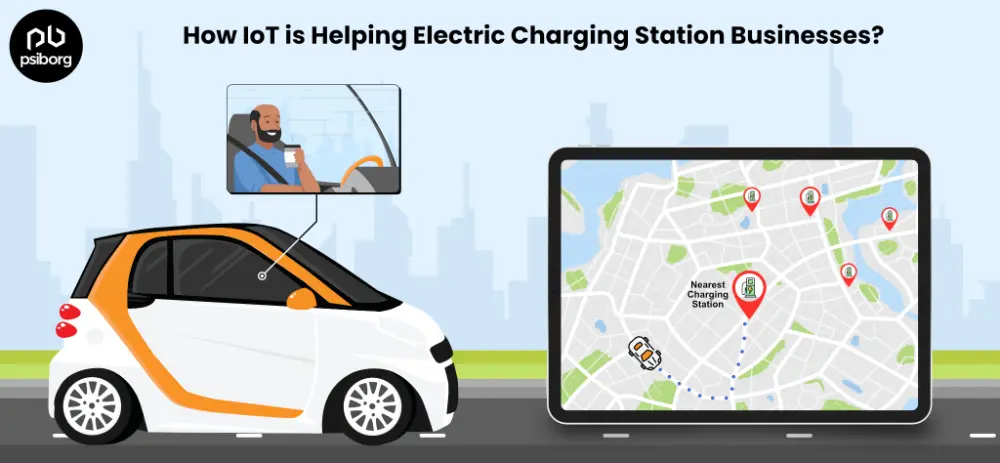When talking about the Internet of Things (IoT), people imagine IoT devices and smart wearables. However, IoT is a blend of hardware and software, where you need hardware to collect data from the surroundings, and software to transmit the data and view it,
Let’s focus today on the data viewing part. To manage various IoT devices and visualize the data collected by those IoT devices, we need an IoT device management app.
Developing an IoT device management app enables effective monitoring of smart devices. These apps designed to manage IoT devices have the potential to boost the quality of a smart system and it also improves the user experience.
Read on to understand all about IoT device management apps and why exactly you need an app to manage IoT devices.
WHAT IS IOT?
The Internet of Things (IoT) refers to a system of interrelated, internet-connected objects, which are IoT devices, that are able to collect and transfer data over a network. Building an IoT app helps in controlling managing and monitoring these IoT Devices.
WHAT ARE IOT APPS?
IoT Devices function through Smartphone Applications associated with them. There are various verticals that are automated and where monitoring and controlling can be done through our Smart Phone Apps. Healthcare, industrial automation, smart homes, and buildings, automotive, and wearable devices are just a few. Integration with AI and ML in IoT apps is increasing to add smarter and more intelligent devices.
WHY YOU NEED APP TO MANAGE IOT DEVICES?
There are many ways in which IoT applications (apps) can be used to simplify business workflows and carry out improvement, automation, and control of processes while providing the relevant information, and even monitoring environmental conditions remotely.
Due to these capabilities, IoT applications can help steer new business models and revenue streams and provide real-time data that businesses require to improve existing products and services and develop new ones.
KNOWING ABOUT THE IOT ECOSYSTEM
IOT HARDWARE
Hardware in IoT covers different low-energy sensors that communicate over wireless networks and connect to the internet. From IoT development boards to custom hardware, there are various stages to implementing your IoT idea. Prototyping of IoT devices is generally the first step going towards a product.
IOT FIRMWARE
The hardware code which is programmed in the microcontroller to perform specific tasks is known as firmware. The microcontroller choice in IoT is also dependent on the complexity of the functions that are required to be performed by hardware.
IOT SOFTWARE
Software for an IoT system is a cloud-based application, which can either be a web app or a mobile app. It is a dashboard for monitoring and controlling all functionalities on IoT devices connected to it. The dashboard also collects information from sensors and shows it to users.
CLOUD PLATFORM IN IOT
The cloud is one of the most vital units of the IoT ecosystem. Cloud integration in IoT acts as a bridge between hardware and software. It stores and processes all the data received from IoT devices. There are various cloud platforms that can be used with IoT solutions.
COMMUNICATION PROTOCOLS /SENSOR NETWORK
The network is a crucial pillar in the IoT structure. All data exchange between IoT devices, devices, and apps takes place over the communication protocol. The IoT communication protocols make sure of connectivity between hardware and cloud, cloud and mobile applications as well as communication between IoT devices. Hence, it’s important to have a robust network to extract the best out of the IoT systems.
BUILDING A POWERFUL APP TO MANAGE IOT DEVICES
Below are the detailed steps on how to build a scalable IoT device management app.
CHOOSE THE RIGHT PLATFORM FOR BUILDING AN IOT APP
Building smart apps to manage IoT devices requires various IoT Platforms.
Apart from the technology required and the cost involved, technological compatibility/inconsistency is one of the major challenges to solve through these platforms. This is proving to be quite helpful in allowing IoT developers to connect devices from different vendors that speak different protocols into one unified system.
For example, Android Things, a Google IoT platform supports devices from various manufacturers and can connect to low-energy sensors.

CHOOSE THE MOST RELIABLE HARDWARE
Choosing the most reliable hardware will help to make your IoT system functionally more robust. When we talk of the reliability of the hardware, we are referring to the fact that this hardware must correspond to the requirement of the product solution.
Also, the hardware connection accuracy is also important. You can choose electronic components like controllers or sensors made by reliable device makers to get this quality assurance.
If there is internet accessibility in hardware, then implement FoTA for future updates, so that you won’t require physical access to devices to update them.
MAKE YOUR IOT APP SCALABLE
Before you plan your app’s functionality, you must spend time thinking about the speed at which you plan to develop your app’s functionality. The relevance of your app will depend on how scalable it is. It must be able to manage increasing amounts of data, devices, and processes.
IoT apps that have cloud platform support are the best in terms of scalability.
DESIGN YOUR APP SO THAT IT IS FAST
Users do not like apps that hang or lag. Therefore, it is imperative that your app to manage IoT devices load fast. This is especially true when we are remotely controlling devices.
Just imagine an IoT car app that won’t act immediately on your voice commands. This situation can ruin the entire customer experience. That’s why performance and high-speed connections are top priorities in the IoT ecosystem.
MAKE YOUR APP SECURE
The safety and security of your app are the top priority. Because of the large number of devices connected over the IoT network, the IoT app is vulnerable to security breaches.
Homes, cars, and healthcare infrastructure are the few verticals with IoT implementations. Data breaches in these areas can result in leakage and loss of sensitive personal data.
Here are a few quick tips for making your IoT apps secure:
- Choose hardware vendors carefully – For an app to manage IoT devices, make sure you choose reliable hardware or you can also run it by security specialists.
- Always use trusted IoT platforms – Make sure that you use reliable platforms that test their tools and update them regularly.
- Be careful of network attacks as well as physical attacks – Any data stored on a device should be not only encrypted but also physically protected: make sure it isn’t easy to remove the storage.
- Use protected networks – All data that circulates between your app and devices through a server or the cloud should be encrypted.
- Apply best practices for app security – Deploy encryption, 2F authentication, and other such techniques to ensure that your IoT apps are buffered against malicious cyber-attacks.
TECH STACK FOR BUILDING IOT APP
IoT app developers use the following frameworks for IoT app development:
- MERN (MongoDB, Express, React, Node)
- Flutter
- Ionic
- Swift
- Kotlin
While Flutter, Ionic, and React Native frameworks are used for Hybrid IoT app development, Swift and Kotlin frameworks are preferred for the development of Native IoT apps.
Check this link to know about native and hybrid IoT apps.
IOT APP CHALLENGES
There are two main challenges to IoT app development:
SECURITY
Security is the single most important concern in the IoT ecosystem.
As per a survey conducted by Bain, a high percentage of consumers value security when using IoT solutions.
The security rules for IoT are rather vague and manufacturers and IoT software developers solve security issues in their own way, thereby making IoT systems quite vulnerable to cyber-attacks and data breaches.
TECHNOLOGICAL INCOMPATIBILITY
Technological incompatibility is a glaring challenge in the IoT industry. The term refers to the situation wherein the IoT solutions are not compatible with the existing device and technology framework.
Take the case of an IoT app you want to create for a smart home. It is still a challenge to control all third-party smart devices through a single app due to compatibility issues.
Also Read: IOT DEVICE MANAGEMENT APPLICATION DEVELOPMENT PROCESS.
CONCLUSION
Despite the challenges in IoT app development, it’s an area where continuous research and development are going on. Since IoT is rapidly spreading to every aspect of our lives, be it healthcare, business, and even industries, IoT app development has a bright future.
PsiBorg specializes in IoT mobile and web app development for a wide range of applications including Smart homes, Industrial monitoring, agriculture, wearable technology, etc. Do reach out to us for all your IoT device and application development needs.
FAQs
IoT device management means managing the entire lifecycle of the IoT device and sensors. For this, there are IoT device management apps that give the ability to connect and configure IoT devices with ease. The IoT device management app also allows controlling devices and their data.
Some of the highlighted benefits of an IoT device management app are:
- Better device organization
- Manage device remotely
- Data monitoring
- Simplified device locating
- Device maintenance and updates
IoT devices manage data by collecting it from sensors, processing it locally, or transmitting it to cloud servers for further analysis, storage, and decision-making, often using secure protocols to ensure data integrity and privacy.






